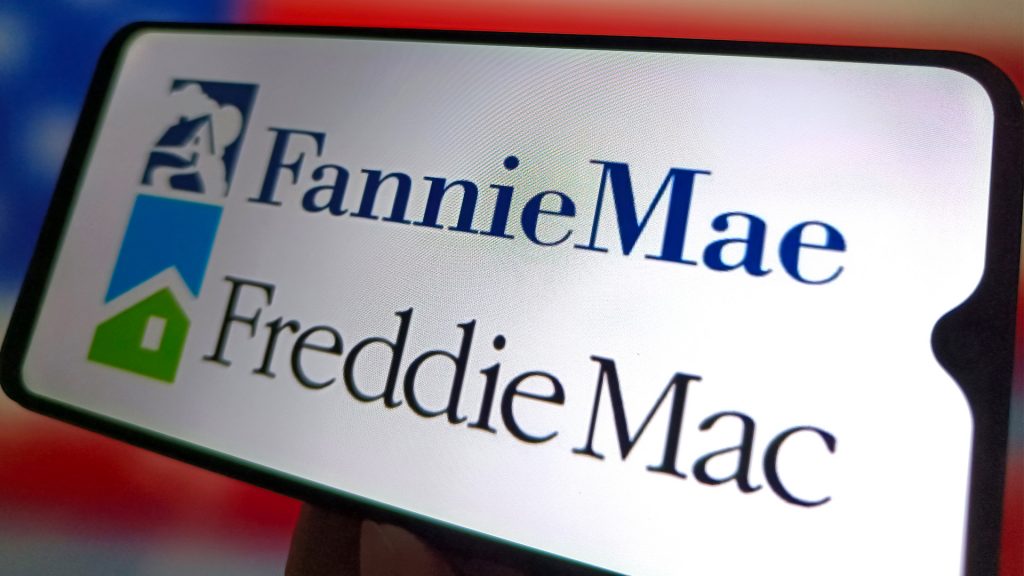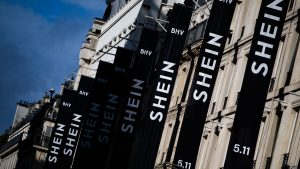Trump wants an IPO for Fannie Mae and Freddie Mac. What does it mean for you?

The Trump administration is preparing to sell stock in mortgage giants Fannie Mae and Freddie Mac after nearly two decades of federal government control, according to The Wall Street Journal. If the firms go through with an initial public offering, how will that impact mortgage rates?
IPO incoming
President Donald Trump and his allies began laying the groundwork for an IPO even before he was elected to a second term last November. Fannie Mae and Freddie Mac have been under federal control, relying on government-backed guarantees to protect investors from losses, since the 2008 financial crisis.
“Prior to that they were considered sort of quasi-government private entities,” Lawrence White, a New York University economics professor and an author of “Guaranteed to Fail: Fannie Mae, Freddie Mac, and the Debacle of Mortgage Finance,” told Straight Arrow News. “They had private shareholders, but they also enjoyed special government status that made the financial markets believe that if push came to shove and they got into financial difficulties, the federal government would be there to bail them out, really bail out their creditors, and that’s indeed what happened in 2008.”
The CEOs of six large banks, including Morgan Stanley, Wells Fargo and Goldman Sachs, met with Trump to discuss the plan, the Journal reported.
While the plan may have been in the works for a while, it could still take some time before investors can start buying up stocks.
“There will probably be one company involved in helping to shepherd the IPO process through, to engage with road shows and the whole nine yards,” said Cliff Rossi, a former Fannie Mae and Freddie Mac employee who is now a business professor at the University of Maryland. “To engage with other prospective investors and get them acquainted with what this will mean, what this new company will be engaged in, all those usual things they want to know before they invest. And then that will take some time.
Why offer an IPO?
A public offering would generate extra revenue for the U.S. Treasury, while also essentially marking the end of one of the last remnants of the 2008 crisis.
“This has a couple of aspects to it,” Rossi said. “One is to finally resolve these two legacy institutions that have been wards of the state effectively for far too long.”
It could become the largest IPO in history.
The largest IPO to date took Saudi Aramco public in 2019 at $25 billion, following similarly large offerings involving Alibaba in 2018 and SoftBank in 2018. However, this offering could eclipse that $25 billion mark.
“If you look at the administration, I think they like to count wins,” Rossi said. “To tout that they resolved Fannie and Freddie and it resulted in the largest IPO in U.S. history, would certainly be a feather in their cap.”
What does this mean for you?
Unless you’re an investor, this move will likely have little impact on you or your mortgage rates.
“Mortgage borrowers are not going to see much of a difference,” Rossi said. “The average person on the street is not going to see much difference. This is that arcane part of the housing finance system that, you know, consumers really don’t touch.”
If anything, Rossi and White said, rates could go up a little.
“Maybe the cost of newly issued mortgages might go up a little bit, because they would no longer be considered pure government,” White said.
However, the government has some incentive to keep those rates down.
“They’re acutely aware that doing anything that significantly negatively impacts the mortgage market would have detrimental effects,” Rossi said. “Not just financial effects on borrowers, but political effects as well.”
Avoiding 2008
Where this could impact everyday Americans is if Fannie Mae and Freddie Mac get into financial trouble again, as they did during the 2008 crisis.
“There is the risk that they take undue risks, they get into financial difficulties, and they have to be bailed out again at a cost to the government taxpayer,” White said.
In 2008, Fannie and Freddie had what is known as an “implicit guarantee.” That means that although nothing was in writing, there was an understanding that if these government-sponsored enterprises ran into serious financial trouble, the government would bail them out.
Trump has said he wants to keep that guarantee in place to ease any concerns about releasing the firms from full government control.
“One hopes that any privatization would be first accompanied by very tight, very effective regulation of the two entities of which there are two primary features,” White said. “One would have to be adequate capital levels, essentially adequate net worth for these private sector companies to tighten restrictions on the kinds of activities they could undertake and the kind of risks they could undertake. That’s got to be an essential feature of any of this. Otherwise, we’re just going to be looking at 2008 again, and we’ll be looking at it real soon. I hope nobody wants that kind of scenario playing out. We’ve seen that movie. It’s not a good one to watch.”
Having that kind of backup would also help speed up the process as Fannie and Freddie may not need to raise the level of capital needed in times of crisis.
“The other sticking point with this is that both Fannie and Freddie need to raise capital in the amount somewhere in the neighborhood about $125 billion, or get to $125 billion, in order to have sufficient buffers against some sort of adverse market shock that could hit them like it did in 2008,” Rossi said.
Either way, when big companies get in trouble, there’s usually a way out.
“They’re going to be so large that, in the event they get into difficulty, the federal government is going to bail them out,” White said.





